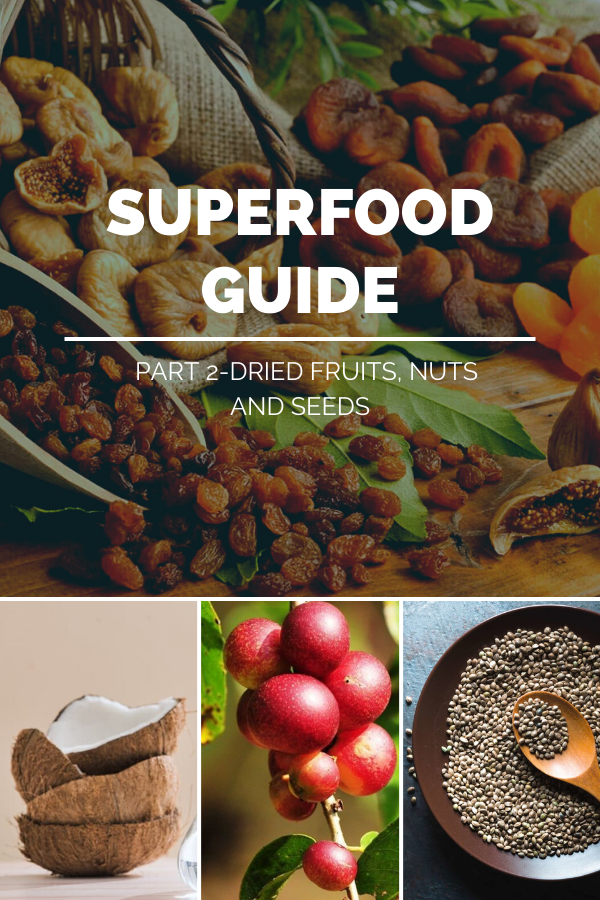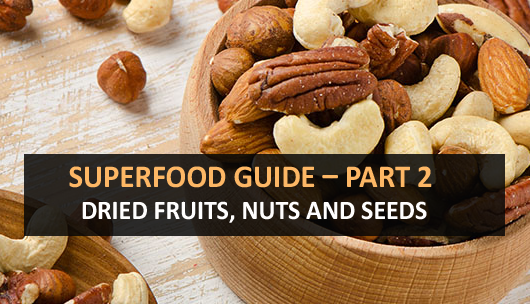
We are pleased to bring you Part 2 of our Superfood Guide. We hope you enjoyed Part 1 on Vegetables, Fruits and Herbs and their amazing health benefits.
In this post we are looking at SuperFoods – Dried Fruits, Nuts and Seeds. This food group is an essential inclusion in our diet especially if you want to dramatically decrease your risk of cancer, heart disease and diabetes, control your weight with no hunger pangs, and reduce the visible signs of aging such as wrinkles and sagging skin, I recommend that you “go nuts.”
Nuts contain a host of nutrients including protein, fiber, calcium, iron, selenium, magnesium and vitamin E. Plus, most of the fat in nuts comes from heart-healthy monounsaturated and polyunsaturated fats.
Dried fruit and nut superfoods are high in anti-oxidants that fight free radicals in the body. Free radicals are, in part, a natural occurrence through metabolism; however, an extra and unnecessary free radical load can be put on our bodies by external factors including pollution, cigarette smoke, radiation, burnt foods, deep fried fats, and cooked foods.
When enough of these free radicals invade our immune system, problems occurs. This is when you need antioxidants to build up the immune system and fight off the free radicals in the form of superfoods or supplements.
Learn more about the benefits of dried fruits, nuts, and seeds:
Nuts
Walnuts
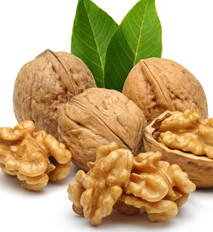 Walnuts are rich in omega-3 fatty acids or polyunsaturated fatty acids. Walnuts are a good source of protein, dietary-fibre, vitamin E, vitamin B6, folate, and thiamin. They help prevent cancer and also help to manage weight.
Walnuts are rich in omega-3 fatty acids or polyunsaturated fatty acids. Walnuts are a good source of protein, dietary-fibre, vitamin E, vitamin B6, folate, and thiamin. They help prevent cancer and also help to manage weight.
Good for a healthy heart, eating walnuts during pregnancy may reduce the symptoms of nausea and provide proper brain development in children. Here are some walnut butter recipes to lure your taste buds.
Almonds
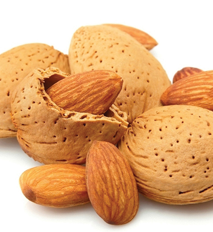 High in protein, fiber, and vitamin E, almonds are great for your heart, digestive system, and skin. Almonds are touted as the most diet-friendly nut because they are high in protein, heart-friendly thanks to high levels of MUFAs, and very filling.
High in protein, fiber, and vitamin E, almonds are great for your heart, digestive system, and skin. Almonds are touted as the most diet-friendly nut because they are high in protein, heart-friendly thanks to high levels of MUFAs, and very filling.
While they are high in fat, they are one of the few foods that are high in “healthy” fat or more scientifically known as, monounsaturated fat. Take a look at how to add Almond butter to your recipes.
Pecans
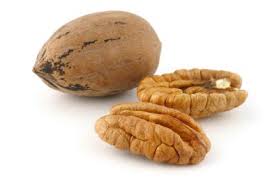 Pecans have shown to significantly lower LDL cholesterol and increase HDL. Frequent consumption of nuts is associated with a decreased risk of sudden cardiac death and other coronary heart diseases, as well as a lower risk of Type II diabetes in women.
Pecans have shown to significantly lower LDL cholesterol and increase HDL. Frequent consumption of nuts is associated with a decreased risk of sudden cardiac death and other coronary heart diseases, as well as a lower risk of Type II diabetes in women.
Pecans are high in omega-3s, which are vital for a healthy brain.
Brazilian Nuts
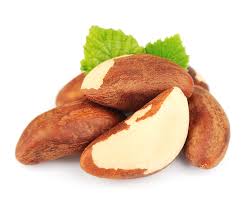 Brazil nuts are also nutritious, containing vitamins A, B1, B2, niacin, and iodine. They are high in fat, but mostly monounsaturated, which is essential to our diet.
Brazil nuts are also nutritious, containing vitamins A, B1, B2, niacin, and iodine. They are high in fat, but mostly monounsaturated, which is essential to our diet.
They are also a good source of selenium, a major antioxidant that is important for the immune system, thyroid hormone metabolism, and reproduction.
Pistachios
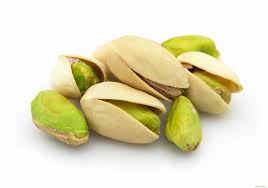 Nuts offer a nutritious amount of protein, fiber, and heart-healthy unsaturated fat, making them one of nature’s perfect foods.
Nuts offer a nutritious amount of protein, fiber, and heart-healthy unsaturated fat, making them one of nature’s perfect foods.
Pistachios are especially rich in phytosterols and soluble fiber — two natural plant compounds that have been shown to lower total and LDL (“bad”) cholesterol levels.
Cashew Nuts
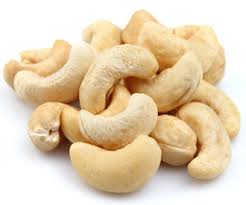 Cashews also have high levels of tryptophan, a feel good chemical that aids in raising moods. It has been claimed that 2 handfuls of cashews offers the same anti-depressive results as one Prozac pill.
Cashews also have high levels of tryptophan, a feel good chemical that aids in raising moods. It has been claimed that 2 handfuls of cashews offers the same anti-depressive results as one Prozac pill.
Cashews are also known for their high iron content, which is needed to make hemoglobin, the red pigment in the blood stream.
Dried Fruits
Ounce for ounce, dried fruit contains more calories, macronutrients, vitamins, minerals, and phytonutrients than its fresh counterpart. When eaten in appropriate portion sizes, dried fruit can contribute a significant amount of essential nutrients to your diet without increasing your overall caloric intake.
Fresh fruits that are naturally high in antioxidant phytonutrients typically contain even higher amounts of beneficial compounds in the dried form. Raisins and dried goji berries contain higher concentrations of antioxidants than the fresh fruits.
Goji Berries
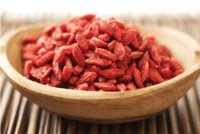 Goji Berries are distinctively flavored red berries and are a very rich source of vitamin C. They are a superb source of vitamins A, B1, B2, B6 and E and contain a full complement of protein with 18 amino acids and 21 trace minerals.
Goji Berries are distinctively flavored red berries and are a very rich source of vitamin C. They are a superb source of vitamins A, B1, B2, B6 and E and contain a full complement of protein with 18 amino acids and 21 trace minerals.
Most of all they are an excellent antioxidant making it an ideal natural whole food for reversing aging and protecting against disease. Read more about the Amazing Goji Berries here.
Dates
 By eating dates, you can knock out some of your daily portions of B vitamins—which are important for energy production—as well as vitamin A, thiamine, riboflavin, niacin, and folic acid. Dates are loaded with dietary fiber, important for digestion and, feeling full.
By eating dates, you can knock out some of your daily portions of B vitamins—which are important for energy production—as well as vitamin A, thiamine, riboflavin, niacin, and folic acid. Dates are loaded with dietary fiber, important for digestion and, feeling full.
Dates contain more than 15 minerals and are a great source of antioxidants including, beta-carotene, lutein and polyphenols; an anti-inflammatory; and contain fluorine, which helps protect teeth from decay.
Raw Cacao
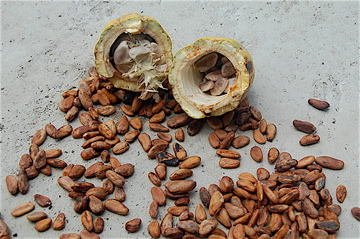 Raw cacao beans contain possibly the world’s most concentrated source of antioxidants found in any food. They are also extremely high in magnesium, which has been found to be the most common deficient major mineral following a balanced diet.
Raw cacao beans contain possibly the world’s most concentrated source of antioxidants found in any food. They are also extremely high in magnesium, which has been found to be the most common deficient major mineral following a balanced diet.
Each serving of raw cacao beans contains 21% of the recommended daily allowance of iron. And if that is not enough, raw cacao beans have an antioxidant (ORAC) score of 95,500.
Maca
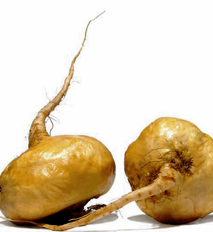 Maca powder is from the Maca root, a flavorful, ancient superfood from Peru. Maca has been cultivated for at least 2000 years and was consumed by Inca warriors to increase strength and endurance. It is a highly nutritious food that has been used traditionally to gain energy, promote sexual desire, support fertility, and enhance immune system function.
Maca powder is from the Maca root, a flavorful, ancient superfood from Peru. Maca has been cultivated for at least 2000 years and was consumed by Inca warriors to increase strength and endurance. It is a highly nutritious food that has been used traditionally to gain energy, promote sexual desire, support fertility, and enhance immune system function.
Acai
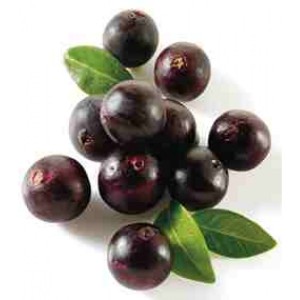 These tropical berry have powerful antioxidant properties thanks to a high level of anthocyanins, which are pigments also found in red wine. The ORAC rating of acai is 1,027. Make sure to look for the freeze dried acai fruit in which the nutrients are kept intact or if buying the juice look for a brand that has not been pasteurized or heated in any way.
These tropical berry have powerful antioxidant properties thanks to a high level of anthocyanins, which are pigments also found in red wine. The ORAC rating of acai is 1,027. Make sure to look for the freeze dried acai fruit in which the nutrients are kept intact or if buying the juice look for a brand that has not been pasteurized or heated in any way.
Coconuts
 Young coconuts are one of the highest sources of electrolytes in nature.The molecular structure of coconut water is identical to human blood plasma, which means that it is immediately recognized by the body and put to good use.
Young coconuts are one of the highest sources of electrolytes in nature.The molecular structure of coconut water is identical to human blood plasma, which means that it is immediately recognized by the body and put to good use.
Drinking the juice from a young coconut is like giving your body an instant blood transfusion.
Noni
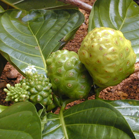 Research documents that the noni fruit has astounding anti-bacterial properties, even against E-coli. It has anti-tumor activity, anti-inflammatory properties, is effective as a pain reliever, generates cell repair, and strengthens the immune system.
Research documents that the noni fruit has astounding anti-bacterial properties, even against E-coli. It has anti-tumor activity, anti-inflammatory properties, is effective as a pain reliever, generates cell repair, and strengthens the immune system.
It has been proven beneficial for colds and flus, digestive disorders, skin disorders, pain relief, headaches, infections, and more. If you would like to know more about the benefits of Tahitian Noni Juice, go on and read here.
Seeds
When it comes to nutrition-dense superfoods, seeds outshine the others. But, the question is, do they deserve their health halo? “There is an obsession with healthy fats, protein and fiber—it’s like the trinity—and seeds have all three,” says Dawn Jackson Blatner, a registered dietitian in Chicago, Illinois.
Of course, shortly behind every health food trend are enterprising food companies quick to sell you packaged foods that contain them—making it tough to tell what’s truly good for you and what is not.
Flaxseed
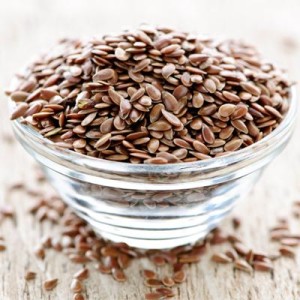 Flaxseeds and flaxseed oil have attracted a lot of attention for their nutritional benefits because they contain high levels of lignans and omega-3 fatty acids, that act as antioxidants.
Flaxseeds and flaxseed oil have attracted a lot of attention for their nutritional benefits because they contain high levels of lignans and omega-3 fatty acids, that act as antioxidants.
Lignans in flaxseed possess anti-cancer properties. Studies performed on mice found that flaxseed extract reduced growth of specific types of tumors and were also helpful in breast and prostate cancers.
Pepitas (Pumpkin Seeds)
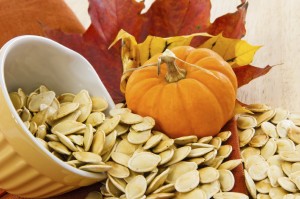 For a tasty snack you can enjoy a la carte, roasted pumpkin seeds – also known as pepitas – are the winner, hands-down.
For a tasty snack you can enjoy a la carte, roasted pumpkin seeds – also known as pepitas – are the winner, hands-down.
The green seeds are high in fat (14g per ounce) and relatively low in fiber (2g), but make up for it with nearly 10g of protein and a slew of minerals, including half or more of the daily recommended doses of copper, magnesium, manganese, phosphorous, and zinc.
Chia Seeds
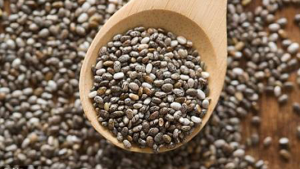 Black and white chia seeds (Salvia Hispanica) are the highest known plant source of omega-3s, with 8 times more than salmon! It is in a highly stable form due to its powerful and naturally occurring antioxidants.
Black and white chia seeds (Salvia Hispanica) are the highest known plant source of omega-3s, with 8 times more than salmon! It is in a highly stable form due to its powerful and naturally occurring antioxidants.
Chia is an easy way to add healthy nutrition to your daily diet, with vitamins A, B12, and C, protein (18 Amino Acids), calcium, bowel-regulating soluble and insoluble fiber, and other minerals such as potassium, phosphorous, folate, zinc, and iron.
Sesame
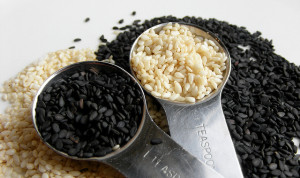 They’re kind of overlooked because people do not know what to do with them. These seeds are high in zinc, which helps immune health. Per ounce, the seeds have 5g of protein, 4g of fiber, and contain more than a third of the recommended copper and manganese. They are also a good source of calcium, magnesium, and iron.
They’re kind of overlooked because people do not know what to do with them. These seeds are high in zinc, which helps immune health. Per ounce, the seeds have 5g of protein, 4g of fiber, and contain more than a third of the recommended copper and manganese. They are also a good source of calcium, magnesium, and iron.
Sunflower Seeds
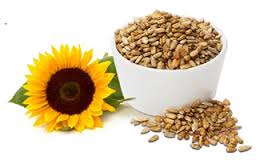 Sunflower Seeds are considered to be the best whole food source of vitamin E, an antioxidant that helps protect cell membranes, brain cells, and lower the risk of chronic diseases.
Sunflower Seeds are considered to be the best whole food source of vitamin E, an antioxidant that helps protect cell membranes, brain cells, and lower the risk of chronic diseases.
Sunflower seeds offer two times more protein than walnuts and pecans, and six times more vitamin E than peanuts! Phytochemicals found in sunflower seeds promote cognitive functions and lower bad cholesterol. Naturally occurring chemical compounds, found in sunflower seeds, inhibit the growth of cancer cells and help fight colon, prostate, and breast cancer.
Hemp Seeds
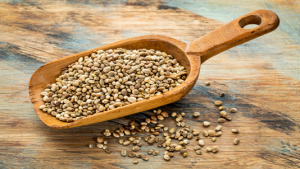 Hemp is one of very few plant proteins that supply you with all the essential amino acids, those of which your body can’t produce on its own to build muscle and create protein.
Hemp is one of very few plant proteins that supply you with all the essential amino acids, those of which your body can’t produce on its own to build muscle and create protein.
The fatty acids in hemp seeds also boost your immune system. The crop itself is highly sustainable, growing as fast as 10 feet in 100 days and naturally requiring very few pesticides. They are an omega-3 powerhouse, rich in ALA, and a fatty acid proven to ward off heart disease.
SuperFood for Thought
Most slimmers avoid nuts because they are worried about the high calorie count. Some studies suggest they may actually help you lose weight when included as part of a moderate fat, rather than a high-fat diet. This is possibly because people find it easier to stick to a diet that has fewer restrictions. The key is to have small amounts and always opt for unsalted varieties.
Edible seeds are chock-full of fiber, protein, vitamins, and minerals. We should think about grabbing seeds as a snack or as a food source rather than just bio-materials. Ignore them at your own health risk. Rich in proteins, healthy fats, omegas and fiber, nuts and seeds provide valuable nutrition to our diets and benefit our health in so many ways.
Eat right and stay healthy!!
Reference:
http://www.weightlossresources.co.uk/food/healthy/superfoods/nuts.htm
http://www.joybauer.com/photo-gallery/top-10-superfoods/dark-chocolate.aspx
http://www.mensfitness.com/nutrition/what-to-eat/20-essential-superfoods-for-every-mans-diet/slide/10
Enjoyed SuperFood Guide – Part 2 – Dried Fruits, Nuts and Seeds? Share it with your friends so they too can follow the Superfoodsliving journey.
Share on Pinterest
